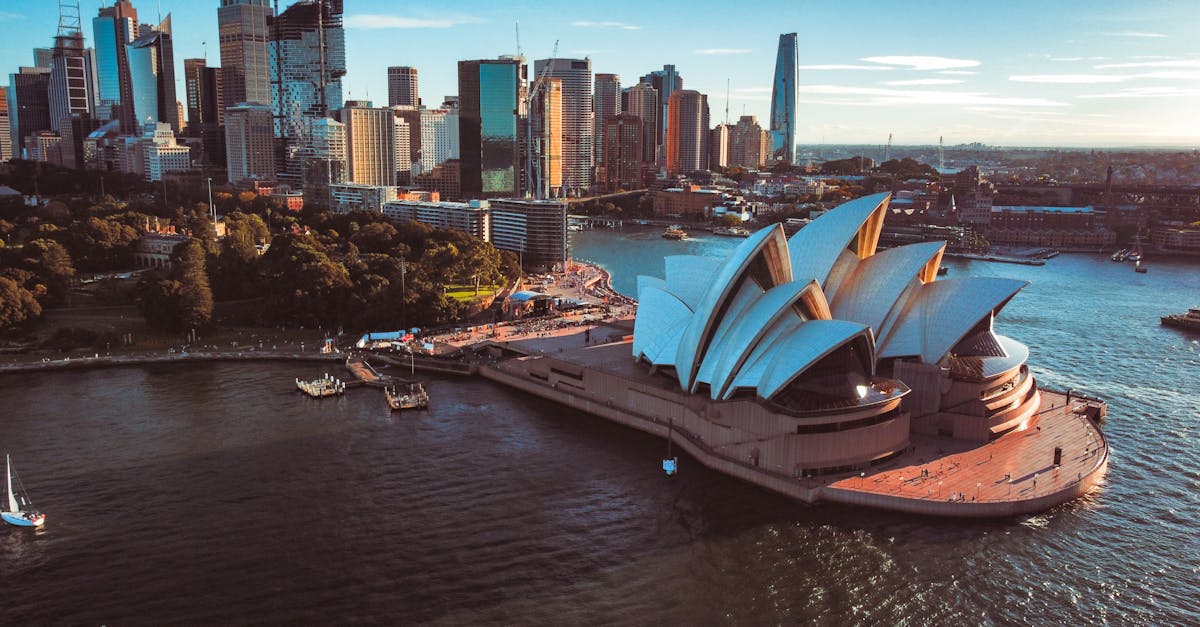NPAs Down, Credit Up
-
Improved Credit Availability Due to Declining NPAs: India’s banking sector has strengthened with Gross NPA ratios falling to a multi-decade low (2.3% in March 2025). This decline, particularly in industry and MSME NPAs, has significantly boosted banks’ capacity to lend.
-
MSME Sector Benefits Most: Credit to MSMEs is showing robust double-digit growth (around 18% in May 2025), a significant turnaround from 5-7% growth between 2011-2013. This is attributed to improved MSME financial health, lower serious delinquencies (1.8%), revised definition of MSMEs, and government initiatives like enhanced guarantee covers and reduced TReDS turnover thresholds.
-
Overall Credit Growth Slowdown: Despite improved NPA situation, overall bank credit growth has decelerated to 9.5% (June 2025) from 17.4% last year, showing a decline since May 2024.
-
Reasons for Credit Growth Slowdown:
- Stricter RBI Lending Rules: Increased risk weights for consumer and NBFC loans have made banks more cautious, drastically reducing unsecured loan growth.
- Low Retail Lending in Private Banks: Private banks have a lower share of floating rate loans (54.7% linked to EBLR) compared to PSBs (59.8%), hindering the transmission of RBI rate cuts and slowing credit growth.
-
Shift Towards Public Sector Banks (PSBs): PSBs have maintained stable credit growth (12.2% in FY25) and increased their share of incremental credit (56.9% in FY25), benefiting from the government’s 4R strategy (Recognition, Resolution, Recapitalisation, Reforms). Private banks have seen a sharp decline in credit growth (9.5%).
-
Corporate Deleveraging and Cash Holdings: Corporates have significantly reduced debt and increased cash holdings (around 18-19% jump in FY24-FY25), indicating potential for internal funding of capital expenditure.
-
Evolving Credit Markets: Diversification is occurring with private credit markets expanding and corporates tapping off-bank channels like commercial papers and capital markets for borrowing.
Bio-boosters
- Government to Mandate Scientific Approval for Biostimulant Sales: The Union Agriculture Minister has announced that only biostimulants proven scientifically effective and meeting necessary criteria will be approved for sale, addressing concerns about unregulated products.
- Why in news: This is a direct response to numerous farmer complaints regarding the ineffectiveness of many biostimulant products.
- Focus on Quality and Effectiveness: The government will implement Standard Operating Procedures (SOPs) to ensure biostimulants deliver tangible benefits to farmers in terms of nutrition efficiency, stress tolerance, and crop quality.
- Why in news: To curb the sale of substandard products and protect farmers from financial losses due to ineffective treatments.
- Action Against Suspicious Manufacturers: Authorities will take action against companies selling biostimulants without proper validation or those found to be fraudulent.
- Why in news: To create accountability within the biostimulant market and deter malpractices.
- Strengthening Regulatory Framework: India already has a regulatory framework via amendments to the Fertiliser (Control) Order, 1985 (FCO), with recent updates in 2024 and 2025, reinforcing the government’s commitment to structured oversight.
- Why in news: Shows the ongoing effort to formalize and control the biostimulant sector.
- Significant Market Growth Projected: India’s biostimulant market is expected to grow substantially, from USD 355-362 million in 2024 to USD 1.13-1.2 billion by 2032.
- Why in news: Highlights the economic importance of the sector and the need for robust regulation to support sustainable growth.
- Biostimulants Enhance Plant Processes: These substances or microorganisms stimulate natural plant processes, improving nutrient efficiency, abiotic stress tolerance, and crop quality.
- Why in news: Provides context on the potential benefits of biostimulants when they are effective and scientifically validated.
India’s Defense Tech
-
Successful Ballistic Missile Tests: India successfully test-fired Prithvi-II and Agni-I short-range ballistic missiles from Chandipur, Odisha.
- Why: Validates operational and technical parameters, conducted under Strategic Forces Command, demonstrating India’s capability in developing and deploying indigenously produced ballistic missiles. Prithvi-II has a 250-350 km range and can carry conventional/nuclear warheads. Agni-I is nuclear-capable with a 700-900 km range, bridging the gap in India’s deterrence strategy.
-
Akash Prime Air Defence System Trial: The Indian Army successfully conducted trials of the indigenously developed Akash Prime air defence system in Ladakh.
- Why: Features an indigenous active RF seeker for improved accuracy across terrain and weather. Tested at over 15,000 feet in eastern Ladakh, demonstrating its capability to operate at high altitudes and defend assets against aerial threats. This highlights India’s progress in air defence technology, crucial for national security.
US Brands Resistance Front Terror
- US Designates The Resistance Front (TRF) as Global Terrorist Organization: The US has officially listed TRF as a Foreign Terrorist Organization (FTO) and a Specially Designated Global Terrorist (SDGT) group.
- India Welcomes US Decision: India’s Ministry of External Affairs (MEA) welcomed the US move, viewing it as a strong affirmation of India-US counter-terrorism cooperation.
- TRF’s Link to Pahalgam Attack: The TRF claimed responsibility for the terror attack on civilians in Pahalgam, Jammu and Kashmir, on April 22, 2025.
- TRF as a Proxy for LeT: The MEA stated TRF is a proxy for the Pakistan-based Lashkar-e-Taiba (LeT), created to give militancy in Kashmir an “indigenous” appearance and evade international scrutiny.
- India’s Diplomatic Push: Following the Pahalgam attack and its counter-terrorism Operation Sindoor, India had been urging global action against TRF, including at the UN, though the UN Security Council’s condemnation did not name TRF.
- Counter-Terrorism Cooperation: The US decision is seen as a demonstration of the US administration’s commitment to counter-terrorism and ensuring accountability for terrorist organizations and their proxies.
- India’s Zero Tolerance Policy: India reiterated its commitment to a zero-tolerance policy on terrorism and its intent to work with international partners to hold terror groups accountable.
Banni Cheetah Ready
- Banni Grasslands Ready: Gujarat’s Banni Grasslands, Asia’s largest grassland, are prepared for cheetah reintroduction.
- Why: A 600-hectare enclosure is ready, herbivore populations (chital, sambar) are being increased, and infrastructure like CCTV monitoring and a veterinary center are in place.
- Ideal Habitat: Banni’s environment closely matches cheetahs’ natural African habitat, featuring grasslands, savannahs, and scrublands.
- Why: This similarity is crucial for the cheetahs’ adaptation and survival in India.
- Project Cheetah Progress: The Gujarat Forest Department has established a breeding center and enhanced prey populations.
- Why: This demonstrates significant progress in Project Cheetah’s goal to re-establish the cheetah in India, which went extinct in 1952.
- Collaboration: The Reliance Foundation’s Vantara has collaborated with the Gujarat Forest Department to reintroduce spotted deer.
- Why: This partnership is vital for restoring ecological balance and supporting the cheetah’s prey base.
- Phased Introduction: Cheetahs are expected to be introduced in Madhya Pradesh’s Veerangana Durgavati Tiger Reserve before moving to Banni Grasslands and Rajasthan’s Shahgarh grasslands.
- Why: This phased approach allows for careful monitoring and acclimatization of the cheetahs in different environments.
- Infrastructure Development: Fences are installed to prevent other carnivores from entering cheetah enclosures, and veterinarians have received training from Kuno National Park.
- Why: These measures ensure the safety and well-being of the reintroduced cheetahs.
India Cyber Scams
-
Sharp Surge in Financial Cyber Frauds: India is experiencing a significant increase in financial cyber frauds, primarily targeting citizens.
- Why in News: Reported by the Indian Cyber Crime Coordination Centre (I4C), a unit under the Ministry of Home Affairs (MHA).
-
Massive Financial Losses:
- First half of 2025: Average loss of Rs 1,000 crore per month, totaling Rs 7,000 crore.
- Projected annual loss for 2025: Exceeding Rs 1.2 lakh crore (0.7% of India’s GDP).
- Why in News: Analysis reveals targeting of the Indian economy and significant monthly losses (e.g., Rs 1,192 crore in January, Rs 951 crore in February).
-
Origin of Scams: Over 50% of frauds originate from Southeast Asian countries (Cambodia, Myanmar, Vietnam, Laos, Thailand).
- Why in News: These are operated from high-security compounds allegedly run by Chinese handlers. Indian intelligence identified 45 scam centres in Cambodia, 5 in Laos, and 1 in Myanmar.
-
Nature of Scams: Primarily stock trading/investment scams, digital arrest scams, and task-based/investment-based scams.
- Why in News: These are the major types of cybercrime frauds operating from Southeast Asia.
-
Modus Operandi: Victims are trafficked via fake job offers, routed through countries like Dubai and Thailand to operate scams. Recruitment agents are active across Indian states.
- Why in News: Agents are actively recruiting in Maharashtra, Tamil Nadu, Jammu and Kashmir, Uttar Pradesh, and Delhi, primarily for Laos, Myanmar, and Cambodia. Over 5,000 Indians are suspected to be trapped.
-
Systemic Gaps: Loopholes exist in digital banking, issuance of ghost SIM cards by PoS agents, and weak immigration verification processes.
- Why in News: These gaps enable anonymous and cross-border cybercrimes. CBI has registered FIRs against PoS agents for issuing fraudulent SIMs.
-
International Cooperation: Cambodian officials met with the Indian government to discuss action plans and requested geographical coordinates of scam centres.
- Why in News: This highlights collaborative efforts to tackle the issue.
-
Key Initiatives: India has legislative measures (IT Act, DPDP Act), institutional frameworks (I4C, CERT-In), and strategic initiatives (Cyber Swachhta Kendra, Chakshu tool).
- Why in News: These are efforts to combat cyber fraud and improve digital hygiene.
Mineral Governance
- Reclassification of Minerals: Barytes, Felspar, Mica, and Quartz, previously minor minerals, are now classified as major minerals.
- Why: These minerals are crucial for new technologies, energy transition, spacecraft, and healthcare, aligning with the National Critical Mineral Mission. This aims to secure strategic mineral resources for India’s future.
- Major vs. Minor Minerals:
- Major Minerals: Include fuel minerals (coal, petroleum) and strategic metallic/non-metallic minerals. The Central Government regulates their leasing.
- Minor Minerals: Defined under the MMDR Act, 1957, as building stones, gravel, ordinary clay, and sand. States regulate their mining and management.
- Clarification (Quarry Owners Association vs. State of Bihar): Classification depends on end-use and local importance, not just volume.
- Significance of Minor Minerals: Essential for infrastructure, manufacturing, and local economies, sourced from riverbeds, hills, etc., often extracted on a small to medium scale.
- Regulation Framework:
- Constitutional Division: States have power under List II; Centre can legislate under List I in the public interest.
- MMDR Act, 1957: Central government enacts the Act; Section 15 delegates rule-making power for minor minerals to states (leases, permits, royalties).
- Environmental Laws: Minor minerals also fall under pollution and biodiversity protection laws.
- Central Intervention: Sand Mining guidelines (2016, 2020) and a Sand Mining Framework (2018) issued due to environmental concerns.
- Judicial Intervention:
- Deepak Kumar vs. State of Haryana (2012): Made Environmental Clearance (EC) mandatory for all minor mineral mining, even below 5 hectares, and recommended mining plans.
- Himmat Singh Shekhawat & Satendra Pandey vs. Union of India: NGT invalidated notifications that diluted EC norms for smaller mining projects, emphasizing the need for public consultation and EIA.
- Challenges:
- Illegal and unscientific mining persists, leading to environmental degradation (groundwater depletion, pollution, ecosystem disruption), loss of soil fertility, and law-and-order issues (clashes, threats).
- Hotspots for illegal sand mining include Tamil Nadu, Maharashtra, Andhra Pradesh, Punjab, and Madhya Pradesh.
- Impact on biodiversity, such as Gharial and Ganges River dolphin populations.
- Way Forward:
- Strengthen enforcement against illegal mining.
- Harmonize regulations with a model framework across states for transparency.
- Adopt sustainable alternatives for construction materials.
- Integrate environmental safeguards into mining policies.
- Uphold the Public Trust Doctrine; states must act as trustees for resource management.
Quakes
-
Fundamental Transformation in Earthquake Preparedness: India is calling for a complete overhaul of how it prepares for earthquakes, spurred by recent seismic events like the July 2025 Delhi quake. This signifies a shift from reactive to proactive safety measures.
-
Modernized Building Codes: Strict implementation of revised seismic safety standards is crucial for all new constructions, especially in high-risk areas. This ensures buildings are designed to withstand seismic activity, reducing future damage.
-
Retrofitting Old Infrastructure: Upgrading pre-2000 buildings, particularly critical facilities like hospitals and schools, is essential. This addresses the vulnerability of existing structures, protecting vital services during an earthquake.
-
Resilient Urban Planning: Integrating seismic zoning into city planning and enforcing land-use regulations will reduce earthquake risk. This involves strategic development that accounts for seismic vulnerabilities.
-
Enhanced Monitoring & Technology Integration: Expanding seismic observatories and using AI, IoT, and geospatial data will improve real-time data, early warnings, and resource planning. This leverages technology for faster alerts and better response.
-
Public Awareness & Mainstreaming Risk Reduction: Mass education campaigns and embedding seismic safety in schools, local governance, and businesses are key. This fosters a culture of safety and preparedness at all levels.
-
Risk Financing Tools: Promoting insurance and disaster bonds will incentivize resilience investments. This provides financial mechanisms to support earthquake preparedness and recovery.
-
Global Inspiration & Mindset Revolution: India is drawing lessons from frameworks like the Sendai Framework and countries like Japan and Chile. The emphasis is on making seismic safety a routine priority, reflecting a cultural shift in how earthquakes are perceived.
-
India’s Seismic Risk: India lies on the seismically active Alpine-Himalayan belt due to the collision of the Indian and Eurasian plates.
-
Seismic Zones: India is classified into four zones (II to V) based on seismic risk, with Zone V being very high risk (e.g., North-East India) and Zone II being low risk (e.g., most of South India). Delhi falls under Zone IV (high risk).
MR Vaccine
- Measles Outbreak in Bolivia: Bolivia declared a National Health Emergency with 60-98 confirmed measles cases, prompting vaccination drives.
- Why it’s news: A significant increase in a highly contagious disease requiring emergency measures.
- India Dispatches MR Vaccine: India sent 3 lakh (300,000) doses of Measles-Rubella (MR) vaccine and medical supplies to Bolivia.
- Why it’s news: Demonstrates international aid and health diplomacy, supporting a nation facing a health crisis.
- Global Rise in Measles: Cases of measles are increasing in the Americas and Europe.
- Why it’s news: Highlights a growing global public health concern and the need for robust vaccination efforts worldwide.
- India’s Commitment to Global Health: This initiative reflects India’s commitment to public health cooperation and its proactive role in international health crises.
- Why it’s news: Reinforces India’s position as a contributor to global health security and strengthens its international relations.
- Understanding MR: Measles and Rubella are contagious viral diseases preventable by the MR vaccine, which can cause severe complications and birth defects (Congenital Rubella Syndrome).
- Why it’s news: Provides essential information about the diseases and the vaccine, educating the public on the importance of immunization.
PM Dhan Dhaanya Krishi
- Union Cabinet Approval: The Union Cabinet has approved the Prime Minister Dhan-Dhaanya Krishi Yojana (PMDDKY).
- Objective: To enhance agricultural productivity and promote sustainable agricultural practices across India.
- Budgetary Allocation: An annual outlay of ₹24,000 crore for six years, starting from 2025-26.
- Scheme Convergence: Merges 36 schemes from 11 Union Ministries into a unified agricultural support system.
- Target Beneficiaries: Expected to directly benefit 1.7 crore farmers.
- Focus Districts: Targets 100 underperforming districts based on low productivity, low cropping intensity, and limited credit disbursement.
- District Selection Criteria: A minimum of one district will be selected from each state, considering Net Cropped Area and operational holdings.
- Implementation Model: Modeled on NITI Aayog’s Aspirational Districts Programme.
- Key Features: Aims to augment post-harvest storage, improve irrigation, and facilitate credit access.
- Farmer Involvement: District Agriculture and Allied Activities Plans will be prepared by District Dhan Dhaanya Samiti, including progressive farmers.
- National Goals Alignment: District plans will align with crop diversification, water conservation, soil health, and agricultural self-sufficiency.
- Monitoring: Progress will be monitored monthly using 117 Key Performance Indicators (KPIs) via a dedicated dashboard.
- Expected Outcomes: Higher productivity, value addition in agriculture and allied sectors, local livelihood creation, and increased domestic production.

UAPA Act
-
Bombay High Court Upholds UAPA Validity: The court dismissed petitions challenging the legality of the Unlawful Activities (Prevention) Act (UAPA), stating it is constitutional.
- Why in News: This ruling validates a key anti-terror law, impacting how the government combats perceived threats to national security.
-
UAPA Not a Preventive Detention Law: The court clarified that despite its name, UAPA does not fall under preventive detention laws.
- Why in News: This distinction clarifies the Act’s legal framework and its operational scope.
-
Parliament’s Legislative Competence Affirmed: Parliament has the constitutional authority to enact UAPA under Article 22 and Union List powers.
- Why in News: Reinforces the legislative power of the Union government in matters of national security.
-
Fundamental Rights Allegations Rejected: Claims of violations of Articles 14, 19, and 21 were dismissed, with the law being upheld.
- Why in News: Addresses concerns about the potential impact of UAPA on civil liberties and fundamental rights.
-
UAPA’s Objective: The Act’s primary aim is to prevent activities threatening India’s sovereignty and integrity.
- Why in News: Highlights the core purpose of the law in national security discourse.
-
Key Features: UAPA grants the government broad powers to designate individuals and organizations as terrorists and has stringent bail provisions.
- Why in News: Underscores the significant powers vested in the executive and the challenges faced by those accused under the Act.
Smart Industry
-
Government Push for Industry 4.0 in Public Sector: The Department of Public Enterprises (DPE) is actively promoting the adoption of Industry 4.0 technologies in Central Public Sector Enterprises (CPSEs). This initiative aims to modernize India’s public sector and enhance its global competitiveness.
-
Workshop Highlights Key Technologies: A recent workshop in New Delhi, chaired by DPE Secretary Shri K. Moses Chalai, focused on integrating advanced technologies like AI, IoT, Digital Twins, 3D Printing, and 5G-enabled infrastructure into CPSE operations.
-
“Whole-of-CPSEs” Approach Encouraged: Collaboration across all CPSEs is emphasized, treating Industry 4.0 as a national mission to foster shared learning and strategic integration.
-
Incentivizing Adoption: Plans are underway to integrate Industry 4.0 adoption into the CPSE Memorandum of Understanding (MoU) assessment framework, rewarding early adopters and innovators.
-
Demonstrated Sectoral Applications: The workshop featured expert presentations and CPSE experience-sharing on practical applications of these technologies, such as AI-driven maintenance, digital twins for infrastructure management, and 3D printing in supply chains.
-
Broader Rollout Planned: Following the New Delhi workshop, similar events will be organized in other regions to ensure widespread adoption and capacity building within the CPSE ecosystem.
Virasat Vikas
- New Project Launched: Ministry of Minority Affairs (MoMA) launched a skill training and women entrepreneurship development project under the PM VIKAS scheme.
- Why: To promote socio-economic empowerment of minority communities.
- Training Details:
- 150 youth will be trained in Internet of Things (IoT).
- 300 women will receive leadership and entrepreneurship training.
- Why: To enhance employability and support enterprise development.
- Location and Collaboration:
- Project launched at IIIT Kottayam, Kerala.
- MoU signed between MoMA and IIIT Kottayam for training 450 candidates.
- Why: IIIT Kottayam’s expertise in technology will boost skill development for minorities in Kerala.
- Beneficiary Support:
- Candidates will receive stipends during training.
- Assistance will be provided for employment and self-employment opportunities.
- Why: To facilitate practical application of skills and provide career pathways.
- PM VIKAS Scheme Overview:
- MoMA initiative for skilling, entrepreneurship, and leadership of minority and artisan communities.
- Integrates earlier MoMA skilling schemes into a unified platform.
- Aims to converge with Skill India Mission and other ministries for holistic development.
- Facilitates credit linkages through NMDFC.
- Why: To provide comprehensive support for the socio-economic upliftment of India’s six notified minority communities.
Q&A
- Crucial for Accountability: Question Hour is a primary parliamentary tool for ministers to answer questions about their ministries, ensuring executive accountability.
- Transparency and Scrutiny: It allows MPs to question government actions through oral or written responses, making operations transparent.
- Real-Time Issues: MPs can ask follow-up questions to expose policy gaps and implementation problems, highlighting public concerns.
- Limited Alternatives: With other debates scarce, Question Hour remains vital for holding the executive accountable.
- Examples of Effectiveness: Recent questions revealed significant issues like mass closure of Atal Pension Yojana accounts, low uptake of PM Internship scheme, and high discontinuation rates of UDAN routes.
- Addressing Critical Concerns: Questions also shed light on issues like non-release of funds for Samagra Shiksha scheme in some states, significant vacancies in Kendriya Vidyalayas, and deaths due to manual scavenging.
- Surge in Cybercrime and Frauds: Data presented showed a substantial increase in cybersecurity incidents and digital payment frauds.
- Scheme Implementation Gaps: Questions highlighted low installation rates for renewable energy under PM-KUSUM and a large amount of loan write-offs, particularly by large industries.
- Farmer Welfare and Malnutrition: Data on farmer indebtedness and child malnutrition rates were also brought to light through this mechanism.

India Nomad Village
-
Yakten, Sikkim Declared India’s First Digital Nomad Village: Officially announced on July 14, 2025, Yakten aims to attract remote workers.
-
‘Nomad Sikkim’ Initiative: A joint effort by Pakyong district administration and Sarvahitey NGO to create year-round hubs for digital professionals.
-
Promotes Sustainable Tourism & Remote Work: Aims to boost the local economy by providing opportunities for remote workers and supporting homestay owners.
-
Addresses Off-Season Income Gaps: Targets the six-month tourist off-season to ensure steady income for homestay operators.
-
Infrastructure Focus: Offers high-speed Wi-Fi, eco-friendly practices, zero-waste management, and has installed two internet lines and village-wide Wi-Fi, with inverter power backup.
-
Aligns with State Goals: Supports Sikkim CM’s “One Family, One Entrepreneur” initiative, fostering local entrepreneurship.
-
Sikkim’s Progressive Stance: Builds on Sikkim’s existing distinctions as India’s first fully organic state and 100% ODF.
-
Local Hopes and Challenges: While village representatives are optimistic, they highlight the need for government intervention on basic issues like drinking water alongside promotion.

















